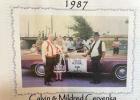The Tuba
The tuba, that instrument that gets people’s attention, even from a distance because its unusual size and shape. At least that’s the case with the sousaphone, the serpentine looking brass instrument with the big that is wrapped around the players body. There is also a smaller style that is carried in front of the body. Speaking of serpents, the first attempt of creating a tuba was called an instrument called the Serpent in 1590. It had a double S shape and was made of chestnut covered with leather. An instrument was needed that would provide a background sound to complement the large orchestras and symphonies that performed along with large choral ensembles in large concert halls. They were a favorite of classical music composers, Mendelssohn, Wagner, Verdi, and Handel. The Serpent was used in Catholic services until the mid-1800s. (I’ll resist any comments on the Serpent being used in church). Several more styles were made in the 1800s and German music instrument inventor, Johann Moritz, filed a patent in 1835 on a bass tuba, that resembles the lap models now used. These early styles all have the bell pointed towards the ceiling. The first circular tuba was invented in Russia and copied in Vienna in 1849. It was made specifically for marching bands and John Philip Sousa developed a model with the bell pointed forward and was detachable. This is where the term sousaphone comes from.









